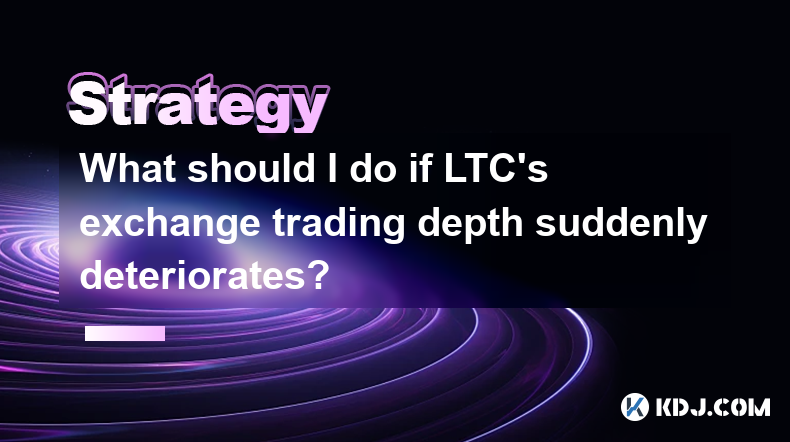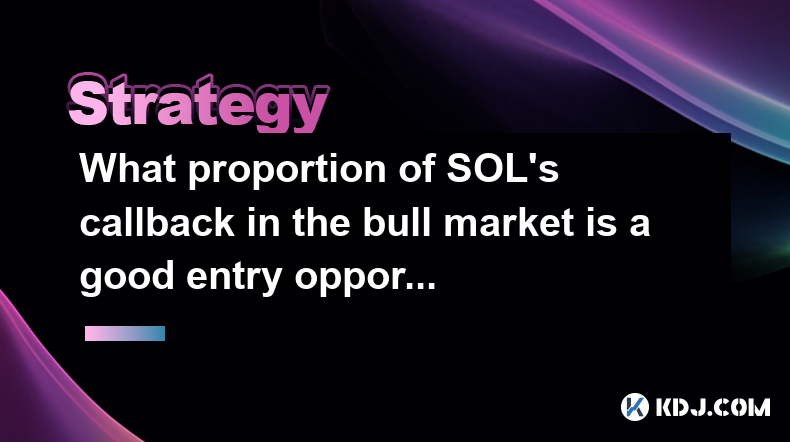-
 Bitcoin
Bitcoin $88,555.6766
1.18% -
 Ethereum
Ethereum $1,626.4043
-1.22% -
 Tether USDt
Tether USDt $0.9998
-0.01% -
 XRP
XRP $2.1018
-1.27% -
 BNB
BNB $605.8750
0.04% -
 Solana
Solana $140.3422
0.04% -
 USDC
USDC $0.9999
0.00% -
 Dogecoin
Dogecoin $0.1643
1.27% -
 TRON
TRON $0.2481
1.05% -
 Cardano
Cardano $0.6359
-1.63% -
 Chainlink
Chainlink $13.3216
-2.53% -
 UNUS SED LEO
UNUS SED LEO $9.1797
-2.79% -
 Avalanche
Avalanche $20.3681
-2.52% -
 Stellar
Stellar $0.2473
-4.43% -
 Sui
Sui $2.3043
2.50% -
 Shiba Inu
Shiba Inu $0.0...01257
-1.15% -
 Toncoin
Toncoin $2.9429
-3.48% -
 Hedera
Hedera $0.1738
0.16% -
 Bitcoin Cash
Bitcoin Cash $347.0587
1.49% -
 Hyperliquid
Hyperliquid $18.2576
-0.35% -
 Litecoin
Litecoin $79.8456
-0.89% -
 Polkadot
Polkadot $3.7809
-4.73% -
 Dai
Dai $0.9999
-0.01% -
 Bitget Token
Bitget Token $4.4439
-0.50% -
 Ethena USDe
Ethena USDe $0.9991
-0.01% -
 Pi
Pi $0.6313
-0.96% -
 Monero
Monero $216.2035
0.57% -
 Pepe
Pepe $0.0...08138
3.46% -
 Uniswap
Uniswap $5.3889
-1.68% -
 OKB
OKB $50.9281
-0.23%
What are the risks of Lightning Loan?
Despite their convenience and speed, Lightning Loans present significant risks due to their unsecured nature, vulnerability to scams and abuse, potential for malicious activities, smart contract risks, and excessive interest rates and fees.
Feb 25, 2025 at 04:00 pm

Key Points:
- Lightning Loan is a type of cryptocurrency loan that allows borrowers to access funds instantly without collateral.
While Lightning Loans offer convenience and speed, they also come with several risks:
- Unsecured nature leads to high risk of default and fraud.
- Lack of regulation and centralization makes Lightning Loans vulnerable to scams and abuse.
- Rapid deployment of funds can facilitate malicious activities such as market manipulation.
- Dependence on smart contracts introduces smart contract risks.
- Potential for excessive interest rates and fees.
Risks of Lightning Loan:
1. Unsecured Nature and Vulnerability to Default:
Lightning Loans are unsecured loans, meaning they do not require borrowers to provide collateral. This free-lending aspect attracts borrowers with poor credit or those unable to obtain loans through traditional channels. However, it also increases the risk of default.
- Default occurs when borrowers fail to repay their loans, leading to losses for lenders.
- Lightning Loan platforms typically monitor borrower activities and implement automated liquidations, but these measures cannot fully eliminate default risk.
- As a result, lenders may charge higher interest rates to offset the increased risk.
2. Vulnerability to Scams and Abuse:
The lack of regulation and centralization in the cryptocurrency market makes Lightning Loans vulnerable to scams and abuse.
- Fraudulent lenders may take advantage of the anonymity offered by Lightning Loans to abscond with funds.
- Borrowers may engage in fraudulent activities by creating multiple accounts or impersonating others to obtain loans.
- A lack of clear legal frameworks and enforcement mechanisms makes it challenging to hold malicious actors accountable.
3. Potential for Facilitation of Malicious Activities:
The rapid deployment of funds through Lightning Loans can facilitate malicious activities that could destabilize the cryptocurrency market.
- Market manipulation: Borrowers can use Lightning Loans to acquire a large amount of a specific cryptocurrency, inflate its price, and then sell their holdings at a profit.
- Pump-and-dump schemes: Similar to market manipulation, this involves artificially inflating the price of a cryptocurrency through coordinated purchases, then selling the holdings to unsuspecting investors.
4. Smart Contract Risks:
Lightning Loans rely heavily on smart contracts to automate loan processes. However, smart contracts are prone to errors and vulnerabilities.
- Bugs or loopholes in smart contracts can allow attackers to exploit the system.
- Unsophisticated or inexperienced users may inadvertently make mistakes that lead to losses.
- Reliance on smart contracts introduces a third-party risk and potential points of failure.
5. Excessive Interest Rates and Fees:
In order to cover the increased risk associated with Lightning Loans, lenders may charge exorbitant interest rates and fees.
- Borrowers should carefully consider the cost of borrowing before taking out a Lightning Loan.
- Excessive interest rates can make it difficult to repay the loan and lead to financial strain.
- High fees can reduce the net amount borrowed and increase the burden on the borrower.
FAQs on Lightning Loan Risks:
1. What are the consequences of defaulting on a Lightning Loan?
Defaulting on a Lightning Loan can have serious consequences, including: damaging credit score, difficulty in obtaining future loans, and exposure to legal action from lenders.
2. How can I protect myself from scams and abuse in Lightning Loans?
Research lenders thoroughly, check reviews, and exercise caution when providing personal or financial information. Be wary of offers that seem too good to be true or require urgent action.
3. Are Lightning Loans suitable for all types of borrowers?
Lightning Loans should be used with caution as they carry a high level of risk. Borrowers with poor credit or difficulty in obtaining traditional loans should consider alternative financing options.
4. How can I mitigate smart contract risks associated with Lightning Loans?
Read and understand smart contracts carefully before signing them. Consider using audited smart contracts or working with reputable lending platforms with strong security measures.
5. What factors should I consider when evaluating Lightning Loan interest rates and fees?
Compare interest rates and fees offered by different lenders to ensure you are getting a fair deal. Factor in the term of the loan, repayment frequency, and any potential additional charges.
Disclaimer:info@kdj.com
The information provided is not trading advice. kdj.com does not assume any responsibility for any investments made based on the information provided in this article. Cryptocurrencies are highly volatile and it is highly recommended that you invest with caution after thorough research!
If you believe that the content used on this website infringes your copyright, please contact us immediately (info@kdj.com) and we will delete it promptly.
- Bitget Exploited: Market-Maker Bot Glitch Triggers $100M Trading Frenzy, Turning $VOXEL into a Crypto Storm
- 2025-04-22 16:40:12
- MANTRA CEO John Patrick Mullin announces plans to burn 300 million OM tokens to stabilize market price after recent massive price crash.
- 2025-04-22 16:40:12
- What is Hyperlane? It is a framework for enabling interoperability among different blockchain networks
- 2025-04-22 16:35:12
- Mantra Burns 16.5% of Its Total Supply to Boost Staking Rewards
- 2025-04-22 16:35:12
- Why Is Polygon (POL) Price Up?
- 2025-04-22 16:30:13
- Can Cardano's Triangle Breakout Drive ADA Price Higher?
- 2025-04-22 16:30:13
Related knowledge

What does the increase in LTC's USDT premium rate mean?
Apr 22,2025 at 04:49pm
The increase in LTC's USDT premium rate is a significant indicator within the cryptocurrency market, particularly for Litecoin (LTC) and its trading dynamics. This phenomenon occurs when the price of Litecoin in USDT (Tether) on a specific exchange exceeds its price in USD on other platforms or in the broader market. Understanding the implications of th...

Can LTC buy the bottom after three consecutive negative weekly lines?
Apr 22,2025 at 04:36pm
The question of whether Litecoin (LTC) can buy the bottom after three consecutive negative weekly lines is a nuanced one, often influenced by various market factors, technical analysis, and sentiment within the cryptocurrency community. To delve into this, we need to consider the technical indicators, historical patterns, and the broader market context....

How to use trading volume to determine the buying and selling timing of BCH?
Apr 22,2025 at 04:14pm
Trading volume is a critical indicator that traders use to gauge the strength and direction of market trends, and it can be particularly useful when determining the buying and selling timing of Bitcoin Cash (BCH). By analyzing the trading volume, investors can gain insights into the market sentiment and make more informed decisions about when to enter o...

What should I do if LTC's exchange trading depth suddenly deteriorates?
Apr 22,2025 at 04:42pm
If you're dealing with a sudden deterioration in Litecoin (LTC)'s exchange trading depth, it's important to understand the situation and take appropriate actions to manage your investments effectively. Trading depth refers to the volume of buy and sell orders at various price levels on an exchange, and a sudden drop can indicate potential issues with li...

What proportion of SOL's callback in the bull market is a good entry opportunity?
Apr 22,2025 at 03:43pm
The question of what proportion of SOL's callback in a bull market represents a good entry opportunity is a nuanced one, requiring a deep dive into market dynamics, historical data, and risk management strategies. Let's explore this topic in detail. Understanding SOL and Bull MarketsSolana (SOL) is a high-performance blockchain platform known for its fa...

Can BCH's Willy indicator be bottomed out in the oversold area?
Apr 22,2025 at 02:56pm
Understanding the Willy IndicatorThe Willy indicator, also known as the Willy ratio, is a technical analysis tool used in the cryptocurrency market to assess the potential for a price reversal. It is calculated by dividing the current price of a cryptocurrency by its 200-day moving average. When the Willy indicator falls into the oversold area, it sugge...

What does the increase in LTC's USDT premium rate mean?
Apr 22,2025 at 04:49pm
The increase in LTC's USDT premium rate is a significant indicator within the cryptocurrency market, particularly for Litecoin (LTC) and its trading dynamics. This phenomenon occurs when the price of Litecoin in USDT (Tether) on a specific exchange exceeds its price in USD on other platforms or in the broader market. Understanding the implications of th...

Can LTC buy the bottom after three consecutive negative weekly lines?
Apr 22,2025 at 04:36pm
The question of whether Litecoin (LTC) can buy the bottom after three consecutive negative weekly lines is a nuanced one, often influenced by various market factors, technical analysis, and sentiment within the cryptocurrency community. To delve into this, we need to consider the technical indicators, historical patterns, and the broader market context....

How to use trading volume to determine the buying and selling timing of BCH?
Apr 22,2025 at 04:14pm
Trading volume is a critical indicator that traders use to gauge the strength and direction of market trends, and it can be particularly useful when determining the buying and selling timing of Bitcoin Cash (BCH). By analyzing the trading volume, investors can gain insights into the market sentiment and make more informed decisions about when to enter o...

What should I do if LTC's exchange trading depth suddenly deteriorates?
Apr 22,2025 at 04:42pm
If you're dealing with a sudden deterioration in Litecoin (LTC)'s exchange trading depth, it's important to understand the situation and take appropriate actions to manage your investments effectively. Trading depth refers to the volume of buy and sell orders at various price levels on an exchange, and a sudden drop can indicate potential issues with li...

What proportion of SOL's callback in the bull market is a good entry opportunity?
Apr 22,2025 at 03:43pm
The question of what proportion of SOL's callback in a bull market represents a good entry opportunity is a nuanced one, requiring a deep dive into market dynamics, historical data, and risk management strategies. Let's explore this topic in detail. Understanding SOL and Bull MarketsSolana (SOL) is a high-performance blockchain platform known for its fa...

Can BCH's Willy indicator be bottomed out in the oversold area?
Apr 22,2025 at 02:56pm
Understanding the Willy IndicatorThe Willy indicator, also known as the Willy ratio, is a technical analysis tool used in the cryptocurrency market to assess the potential for a price reversal. It is calculated by dividing the current price of a cryptocurrency by its 200-day moving average. When the Willy indicator falls into the oversold area, it sugge...
See all articles























































































